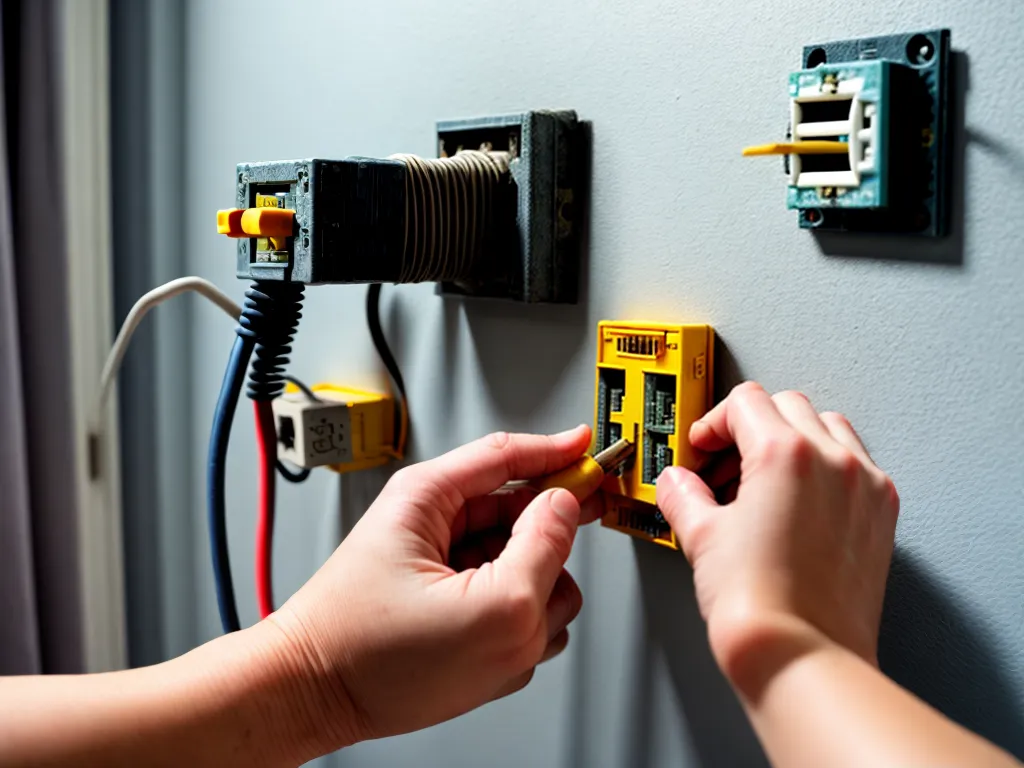
Introduction
Wiring a home can seem daunting, but with proper planning and precautions, it is possible for a homeowner to safely wire their house without hiring an electrician. In this comprehensive guide, I will walk through all the key steps and considerations for DIY electrical work, from acquiring the necessary tools and materials to following proper safety protocols.
While basic wiring projects like installing new light fixtures may be within reach of an ambitious homeowner, anything more complicated like rewiring entire rooms or upgrading an electrical panel should only be handled by a licensed professional. Always be realistic about your electrical skills and only take on what you can confidently handle.
Gather the Right Tools and Materials
Any wiring project starts with having the proper tools and materials on hand. Here is an overview of some essential electrical work supplies:
Basic Tools
- Wire strippers - For stripping insulation off wires
- Needle-nose pliers - For bending and manipulating wires in tight spaces
- Voltage tester - To safely check for live power in wires
- Clamp meter - For measuring current flow through wires
- Stud finder - For locating studs behind walls before drilling
Electrical Boxes and Fittings
- Junction boxes - For housing wire connections
- Wire nuts - For joining multiple wires together
- Conduit and fittings - If running new wiring through walls
- Outlet and switch boxes - For installing new receptacles and switches
Wires and Cables
- 14/2 and 12/2 NM cable - For standard 15 amp and 20 amp branch circuit wiring
- 10/2 NM cable - For high draw appliances like stoves or dryers
- Bare copper ground wires - For grounding outlets and fixtures
Safety Gear
- Work gloves - For handling wires and protecting against cuts
- Safety glasses - For eye protection while working
- Dust mask - For protection against drywall dust and debris
Shut Off Power and Inspect Existing Wiring
Before doing any work, you must first shut off power to the area you'll be wiring. The main breaker shuts off power to the whole house, while individual breakers control each circuit. Shut off all relevant breakers and then verify power is off using a non-contact voltage tester. Accidentally working on live wires can result in severe injury or death by electrocution.
Next, take time to inspect the existing wiring situation. Check for:
- Gauge and condition of existing wires
- Available capacity on circuits you plan to tap into
- Any defects like loose connections or damaged insulation
Also note the locations of studs, pipes, vents, or other obstacles hidden within walls that you'll need to avoid while fishing new wires.
Thorough planning and inspection at this stage helps identify any issues early on.
Run and Secure New Wiring
Now you can start laying out any new wiring that needs to be installed. Here are best practices to follow:
- Carefully measure the required wire lengths with some extra slack
- Neatly run wires through walls/ceilings by drilling holes in studs and joists
- Use wire staples to securely fasten wires every 4-6 inches along their run
- Only run wiring through holes in studs, not notches carved out of stud faces
- For extra safety, run wires through flexible conduit before securing in place
Take it slowly and methodically. Rushing this step often leads to messy, unsafe, and code non-compliant wiring prone to failure.
Make Secure Wire Connections
When splicing wires together, it's critical all connections are mechanically and electrically secure:
- Strip about 1/2" insulation off wire ends using proper strippers
- Twist wires together clockwise with pliers to strengthen the joint
- Place a wire nut over the twisted ends and tighten it clockwise
- Tug firmly on wires to ensure the nut won't loosen from vibration
- Tape splices for added insulation if wires are squeezed too tightly
Poor wire connections can lead to shorts, fires, and other electrical hazards. Taking extra care here pays dividends down the road.
Install New Outlets and Light Fixtures
The home stretch of any wiring project involves mounting the outlets, switches, and light fixtures.
For outlets:
- Feed wires into box and secure with clamps
- Attach hot (black) wire and neutral (white) wire to outlet
- Connect ground wire to green screw or attach to grounded box
For light fixtures:
- Connect black wire to black and white wire to white
- Attach ground wire to green screw or fixture's ground terminal
- Carefully tuck wired connections into junction box
- Mount fixture base to junction box and install light bulb
Follow manufacturer instructions closely, especially when wiring more complex items like smart switches, fan controllers, or hardwired appliances.
Wrap Up and Restore Power
Once everything is installed and secure, it's time for the moment of truth - restoring the power! But first:
- Tidy up all loose wire clippings and wrap any exposed ground wires
- Secure all junction box covers and light fixture shades
- Carefully inspect work area for any overlooked hazards or mistakes
- Have another person double check your work before flipping breakers
With their sign off, go ahead and switch the main and individual breakers back on. Carefully test outlets and switches one by one to confirm proper operation. If you encounter any problems like tripped breakers, buzzing, or flickering lights, immediately flip the breakers back off and thoroughly re-inspect those problem areas before attempting to power up again.
With all that complete, congratulate yourself on a job well done! You just safely wired parts of your home without needing an electrician. But remember to know your limits, only take on what you are confident handling, and consult a professional electrician for any complex wiring work.